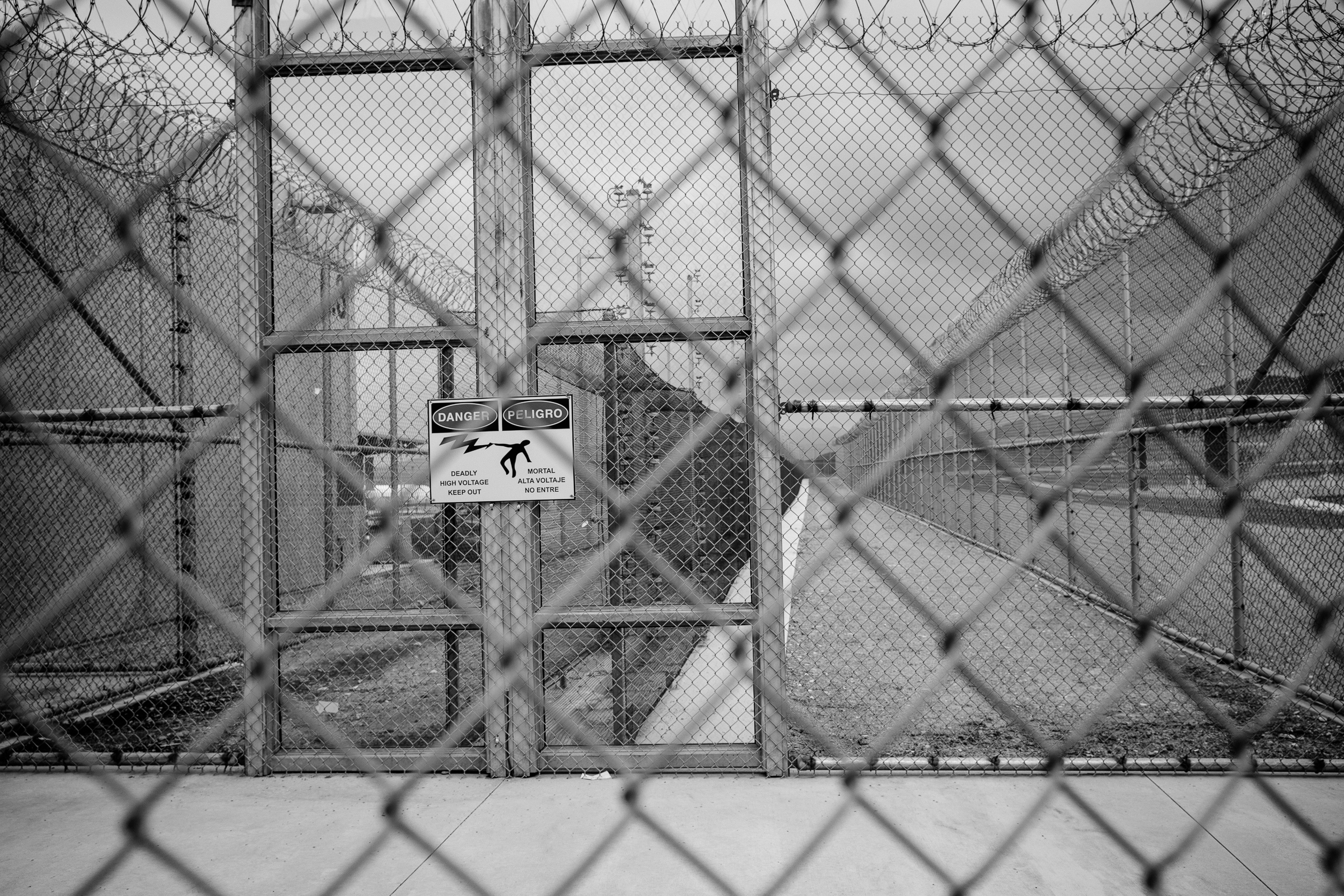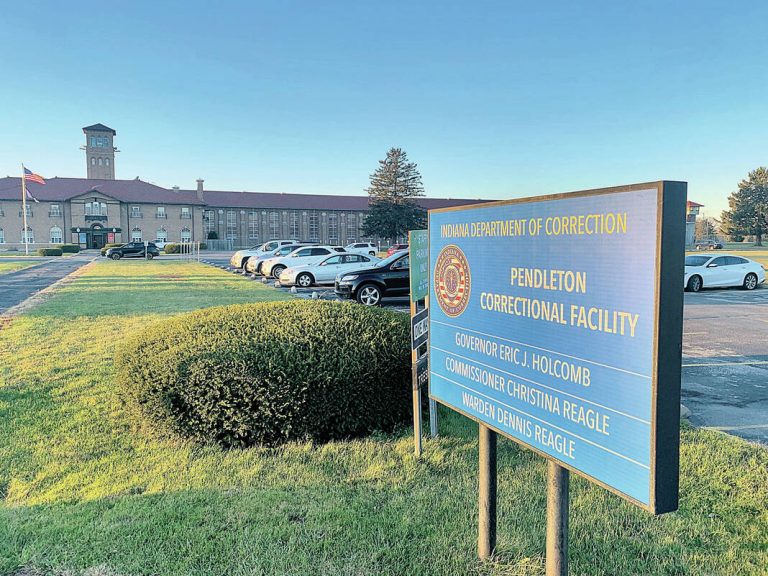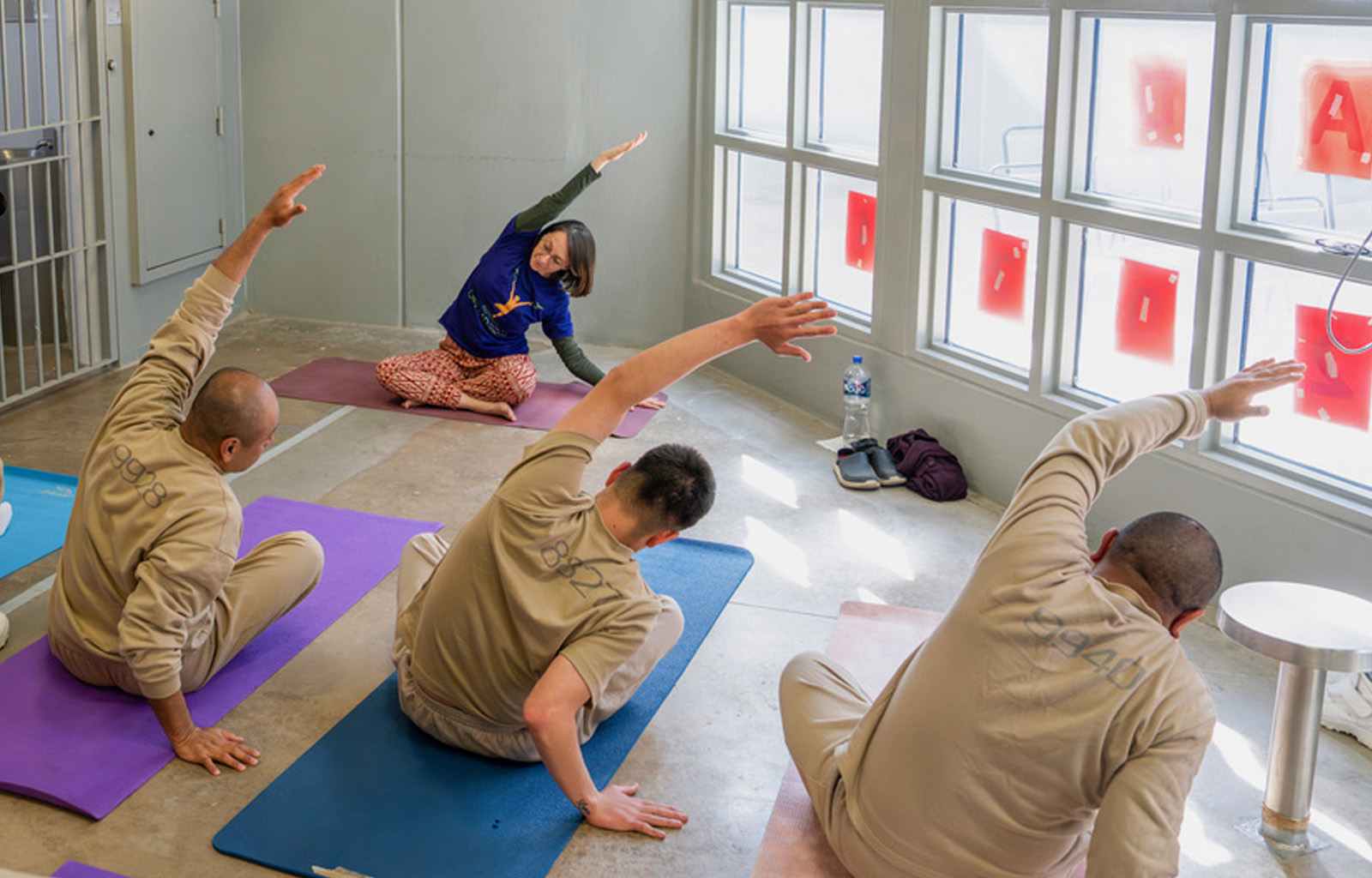By Nicole Hellthaler, Executive Director, Prison Yoga Project
Author’s note: I usually use the term “incarcerated people” when referring to those behind bars, as it centers their humanity. In this piece, you’ll also see the word “prisoner,” which reflects the language more commonly used in the UK and in my conversation with Oana. Language, like justice, is shaped by culture and nuance—and I try to honor both.
I recently joined the first session of our Spring 2025 yoga teacher training—with the goal of welcoming our new cohort. I often find myself sharing the same reflection with anyone who signs up for the journey of yoga teacher training: I see the bravery it takes to be there. The best kind of yoga teacher trainings invite you to go inward, to embody the philosophy and the learnings, and to welcome transformation into something new—all while observing your patterns and pain.
I’m always deeply humbled by those who trust Prison Yoga Project to hold that container for them.
Oana Coman participated in our January 2025 cohort and graduated this spring. Her story stood out to me because she was a prison officer with His Majesty’s Prison and Probation Service (HMPPS) in the United Kingdom. Oana first encountered Prison Yoga Project at the Lilleshall National Sports and Conference Centre, where HMPPS trains its officers. PYP had been providing training for Physical Education staff—HMPPS officers who lead physical education for incarcerated people—to integrate yoga into their programming. It was a chance encounter with Geoff, PYP UK’s Program Director, that sparked Oana’s deeper involvement with PYP.
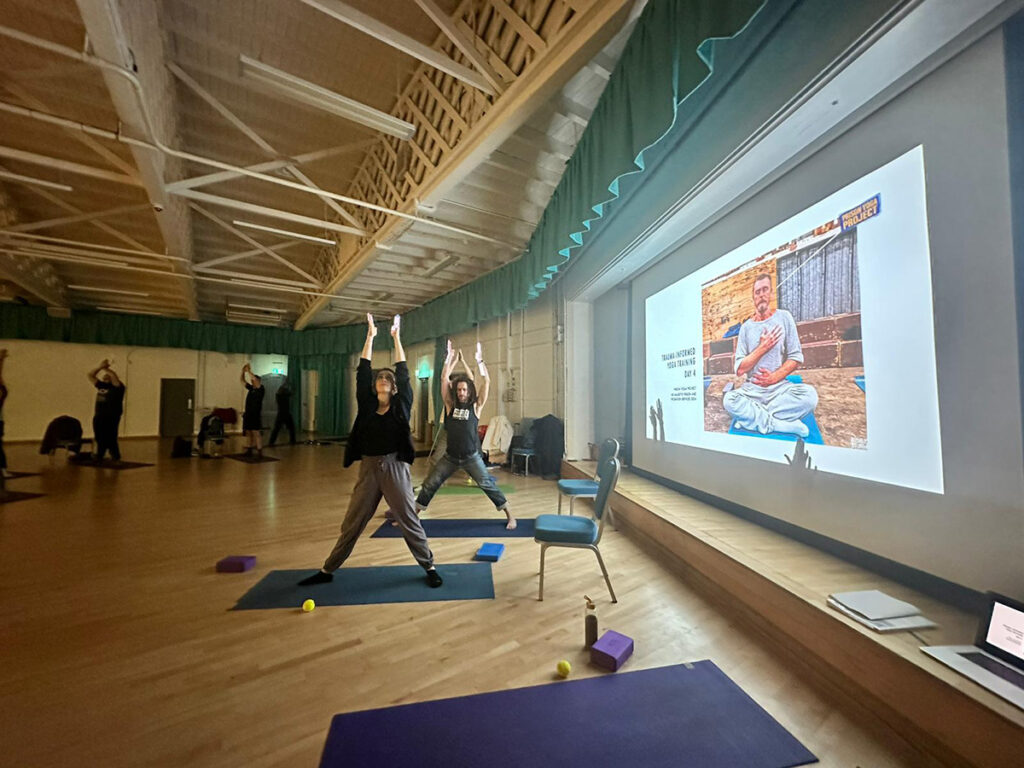
Oana and I met virtually—Friday evening for her in the UK, and Friday morning for me in Arkansas—so I could learn more about her experience in PYP’s HMPPS training and yoga teacher certification. I felt humbled, grateful, inspired, and eager to share more about Oana with our community—so much so that I drafted this piece immediately after our conversation.
As we settled in, I asked Oana about what brought her to Prison Yoga Project, how the training impacted her, and what it’s meant to her personally and professionally. Here’s what I took away from our exchange.
What led you to become an HMPPS prison officer?
Oana first started working with HMPPS prisoners as a counselor, supporting people with addiction—something she had witnessed up close in her own family. She also had a strong personal connection to movement and wellness, as a gymnast since six years old. During her days at the prison, she would use the facility’s gym—cardio in the morning, strength training at lunch—and it was there that the PE staff encouraged her to consider joining their team. But in order to become a PE staff member, she first had to become a prison officer.
Over the course of three years and many accreditations, she made that transition—just in time for the pandemic to hit.
Fortunately for Oana and the people she serves, Live Karma Yoga offered a training for PE staff on how to deliver yoga. She completed a certification to teach Yin Yoga, and because she was considered essential staff, she continued working inside the prison during lockdown. While many remained home, Oana was inside, providing yoga to prisoners who were deeply struggling. Prison is always hard, but the added isolation brought on by COVID protocols was devastating to mental health.
After just one virtual hour with Oana, it’s easy to see why her presence made a difference. She is kind, passionate, and energetic—all qualities that are deeply needed in such a stark and often dispiriting environment.
Given you were already trained to teach yoga, what led you to complete PYP’s training for HMPPS PE staff?
Oana admitted that she was skeptical at first. With her existing training in yoga, and having heard the PYP training was just four days, she doubted it could go deep enough to be meaningful. But after a chance encounter with Geoff, PYP UK’s Program Director, at the sports complex, she learned that those four days in person were only the beginning—a springboard into months of virtual study that would lead to full certification.
Thankfully for all of us, she joined.
When I asked Oana about her experience, she told me it was “the best training she has ever had.” She described how those four days calmed her nervous system through a thoughtful blend of yoga practice and learning. At the time, she was navigating personal and professional challenges, and said the training arrived at the perfect moment.
Even though the topics were heavy—diving into trauma and concepts like Adverse Childhood Experiences (ACEs)—she was grounded by the opportunity to move and release tension. This balance was intentionally built into the training by Josefin Wikström, who developed and adapted the curriculum from a similar program she created in Sweden.
Immediately after those initial four days, while continuing the training virtually, Oana began enhancing her yoga offerings with a trauma-informed lens. Her classes, once rooted mainly in movement, became something more—an intentional space for healing.
Tell me more about your experience in PYP’s online 200-hour yoga teacher training.
Geoff recommended Oana for a scholarship for PYP’s 200-hour YTT, and she joined our January 2025 cohort. She described the training as gentle and inclusive—and because it unfolded over several months, she was able to truly integrate what she was learning. The pacing gave her space to reflect on the concepts we explored and apply them in real time.
She spoke with such appreciation for our teacher trainer, Jen, and the way she held space for the group to learn and connect with each other. One of Oana’s favorite parts of the training was the opportunity to interact with people from a wide range of life experiences—especially those who had been formerly incarcerated.
She felt inspired hearing their stories: people who had been incarcerated for decades, found yoga while inside, and left prison with a desire to serve their communities. As we talked about this, Oana and I both got chills—that full-body reminder that there is hope in what we are doing, even when it feels dismal, even when our colleagues or systems don’t always understand.
I then asked Oana what’s next for her.
Throughout our conversation, Oana was honest about the challenges she’s faced as a Prison Officer—violence, exposure to trauma, secondary trauma, and working in a system that often feels at odds with who she is at her core. These experiences have understandably taken a toll on her mental health. We also shared our sadness over the dire statistics around officer well-being and life expectancy—both in the US and the UK.
She’s taken time away from her role and is now navigating what it might look like to return on a modified schedule. She told me that while she’s wrestled with whether to go back, one thing keeps calling her: “I want to teach yoga.”
It was during this part of our conversation that she shared she had recently received a Butler Trust Award, a prestigious recognition given to individuals in the UK criminal justice system who go above and beyond in their work. Oana was honored for her creativity, dedication, and humanity in delivering inclusive and trauma-informed physical education at HMP Wandsworth—especially during the isolation of the pandemic. Her colleagues describe her as humble, inspiring, and someone who consistently treats people in custody with dignity and care.
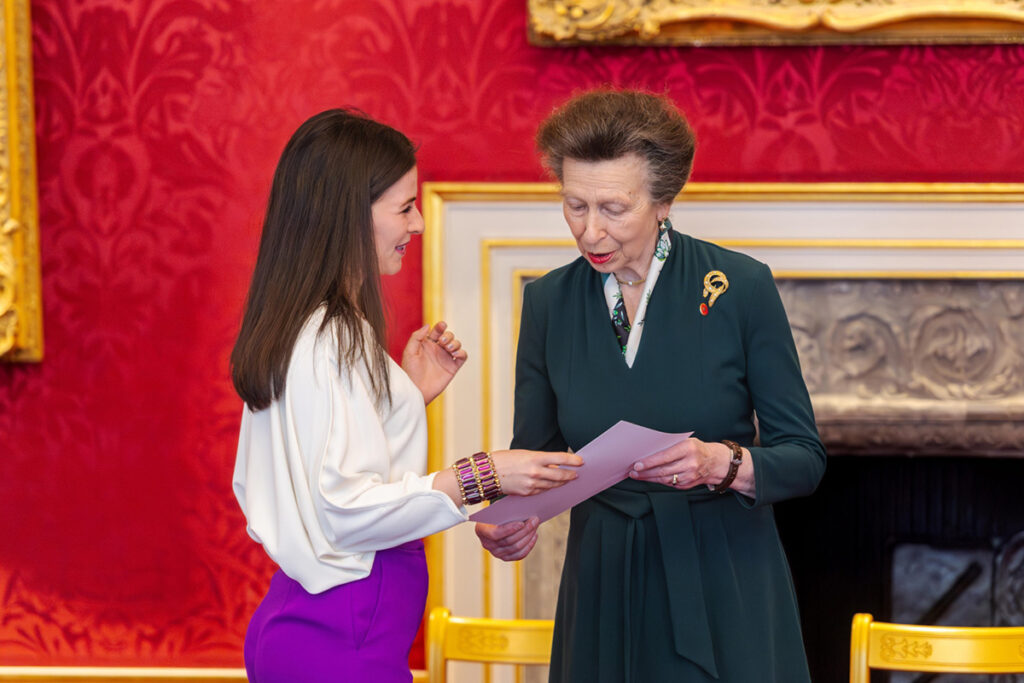
Reading the words others used to describe her only confirmed what I’d already sensed: Oana is a rare and powerful force for good in a system that desperately needs it.
Oana was going to change lives with or without Prison Yoga Project—but we’re deeply grateful to be a resource, a point of inspiration for her, and to have her as a member of our community.
To read more about Oana Coman’s recognition by the Butler Trust, visit: https://www.butlertrust.org.uk/oana-coman-wandsworth-prison
Interested in deepening your own practice or bringing yoga to justice-involved communities? Explore our Yoga Teacher Training program.


